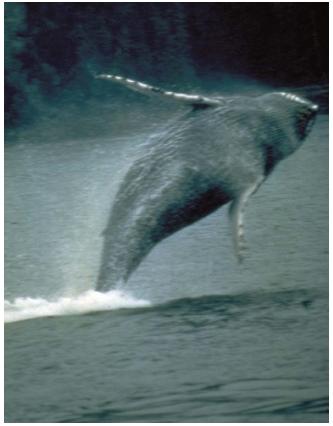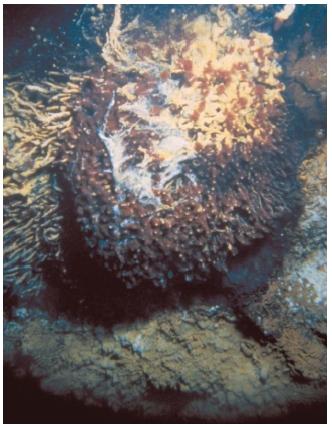Ocean zones

Ocean zones are layers within the oceans that contain distinctive plant and animal life. They are sometimes referred to as ocean layers or environmental zones. The ocean environment is divided into two broad categories, known as realms: the benthic realm (consisting of the seafloor) and the pelagic realm (consisting of the ocean waters). These two realms are then subdivided into separate zones according to the depth of the water.
Water depth versus light penetration
Sunlight obviously cannot penetrate beyond a certain depth in the ocean. Some organisms have, however, evolved to cope with the absence of sunlight at great depths. Plants require sunlight to carry on photosynthesis—the process by which they convert carbon dioxide, water, and other nutrients to simple carbohydrates to produce energy, releasing oxygen as a by-product. Below a depth of about 660 feet (200 meters), not enough sunlight penetrates to allow photosynthesis to occur. The area of the ocean where photosynthesis occurs is known as the euphotic zone (meaning "good light").
From the standpoint of living organisms, the euphotic zone is probably the most important of all oceanic zones. By some estimates, about two-thirds of all the photosynthetic activity that occurs on Earth (on land and in the water) takes place within the euphotic zone.
From 660 to 3,000 feet (200 to 900 meters), only about 1 percent of sunlight penetrates. This layer is known as the dysphotic zone (meaning "bad light"). Below this layer, down to the deepest parts of the ocean, it is perpetual night. This last layer is called the aphotic zone (meaning "without light"). At one time, scientists thought that very little life existed within the aphotic zone. However, they now know that a variety of interesting organisms can be found living on the deepest parts of the ocean floor.
The benthic realm
The benthic realm extends from the shoreline to the deepest parts of the ocean floor. The benthic realm is an especially rich environment for living organisms. Scientists now believe that up to 98 percent of all marine species are found in or near the ocean floor. Some of these are fish or shellfish swimming just above the ocean floor. Most are organisms that burrow in the sand or mud, bore into or are attached to rocks, live in shells, or simply move about on the ocean floor.
In the deeper parts of the ocean floor, below the euphotic zone, no herbivores (plant eaters) can survive. However, the "rain" of dead organic matter from above still supports thriving bottom communities.
Words to Know
Benthic: Pertaining to the ocean floor.
Consumer: An organism that consumes other organisms as a food source.
Chemosynthesis: The chemical process by which bacteria, by oxidizing hydrogen sulfide, serve as primary producer for a marine community.
Pelagic: The water portion of the ocean.
Photosynthesis: The process by which green plants produce energy by converting carbon dioxide, water, and other nutrients to simple carbohydrates, releasing oxygen as a by-product.
Phytoplankton: Microscopic aquatic plants.
Producer: An organism that is capable of utilizing nonliving materials and an external energy source to produce organic molecules (for example, carbohydrates), which are then used as food.
Zooplankton: Microscopic aquatic animals.
The pelagic realm
In the region of the pelagic zone from the surface to 660 feet (200 meters), phytoplankton (algae and microscopic plants) live. They are the primary producers of the ocean, the lowest level on the oceanic food web. They use the process of photosynthesis to provide food for themselves and for higher organisms.
On the next level upward in the pelagic food web are the primary consumers, the zooplankton (microscopic animals). They feed on phytoplankton and, in turn, become food for larger animals (secondary consumers) such as sardines, herring, tuna, bonito, and other kinds of fish and swimming mammals. At the top of this food web are the ultimate consumers, the toothed whales.

In the region from a depth of about 660 to 3,000 feet (200 to 900 meters), a number of organisms survive by spending daylight hours within this region and then rising toward the surface during evening hours. In this way, they can feed off the phytoplankton and zooplankton available near and on the surface of the water while avoiding predators during the day. The most common organisms found in this region are small fish, squid, and simple shellfish. A number of these organisms have evolved some interesting adaptations for living in this twilight world. They often have very large eyes, capable of detecting light only 1 percent as

intense as that visible to the human eye. A majority also have light-producing organs that give off a phosphorescence that makes them glow in the dark.
Organisms found below 3,000 feet (900 meters) have also evolved some bizarre adaptations for survival in their lightless environment. In the deeper regions, pressures may exceed 500 times that of atmospheric pressure, or the equivalent of several tons per square inch. Temperatures never get much warmer than about 37°F (3°C). Organisms within these regions generally prey on each other. They have developed special features such as expandable mouths, large and very sharp teeth, and special strategies for hunting or luring prey.
Recent discoveries
In 1977, near the Galapagos Islands in the Pacific Ocean, oceanographers discovered deep sea vents and communities of organisms never seen before. These hydrothermal vents are located in regions where molten rock lies just below the surface of the seafloor, producing underwater hot springs. Volcanic "chimneys" form when the escaping superheated water deposits dissolved minerals and gases upon coming in contact with the cold ocean water. Around these vents are bacteria that obtain energy from the oxidation of hydrogen sulfide escaping from the vents—a process called chemosynthesis. These bacteria (primary producers) are then used as food by tube worms, huge clams, mussels, and other organisms (primary consumers) living around the vents. Since these communities are not photosynthesis-based like all other biological communities, they may provide clues to the nature of early life on Earth.
[ See also Ocean ]
Thanks for putting it up for the world to use and enjoy!